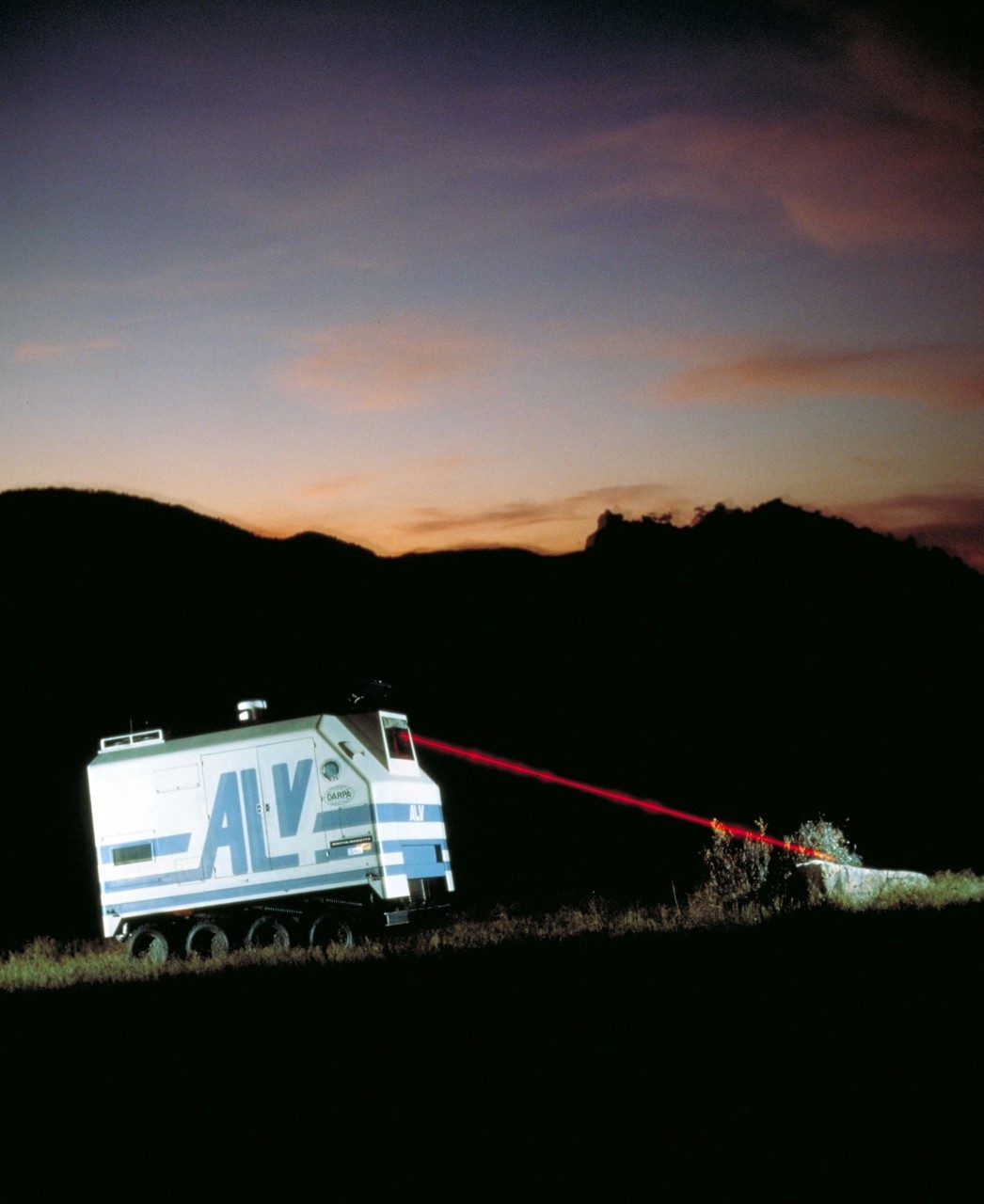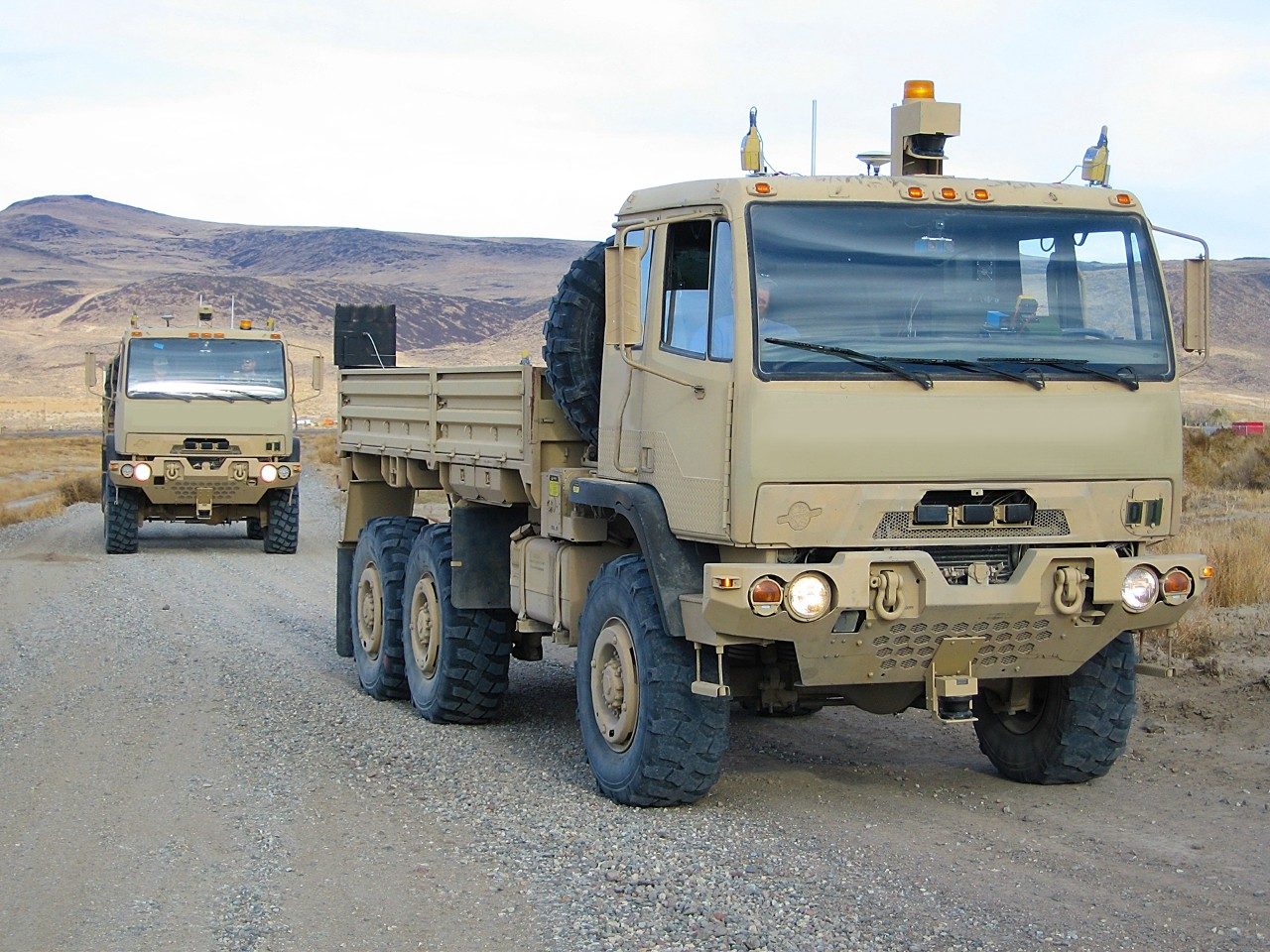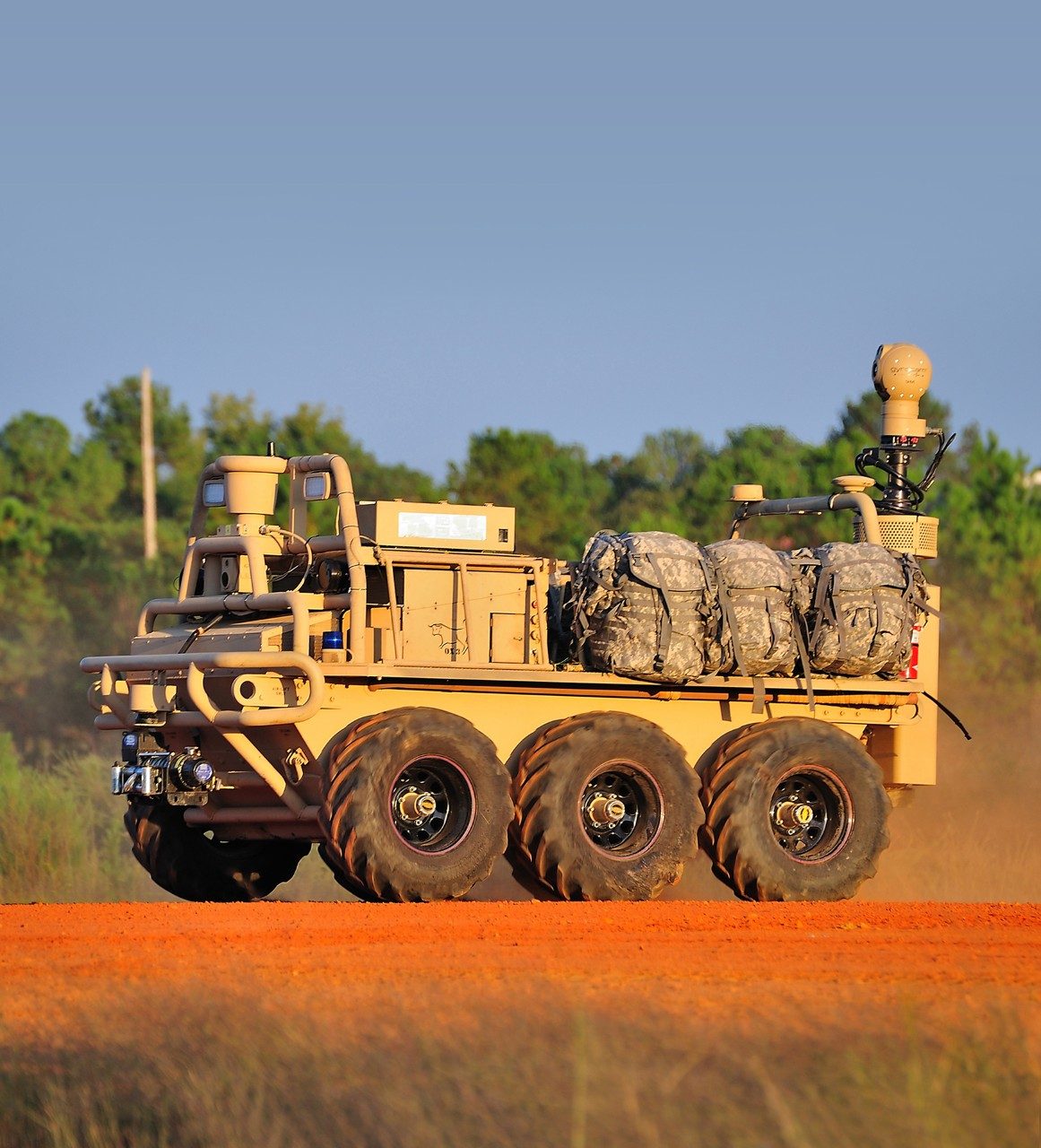On May 31, 1985, a strange-looking, 10-foot-tall, blue-and-white vehicle appeared on a narrow dirt road outside of Denver, creeping along at a snail’s pace in the dark shadows of the Rocky Mountains.
From a distance, the eight-wheeled vehicle looked like a giant ice cream truck or a souped-up RV. A large, roof-mounted, closed-circuit camera peeked out from the top of its boxy frame while three diesel engines propelled it carefully along at a modest clip of 3 mph.

Having traveled just over a half mile, cautiously toeing the centerline of a narrow road, the vehicle came to a halt in front of a group of 80 military and academic officials, who had come from far and wide to witness the landmark test.
As the truck—dubbed ALV for Autonomous Land Vehicle—sat on the dirt, no driver emerged. Incredibly, the vehicle had driven itself. Inside the ALV, six racks of computers, all programmed with complex algorithms developed by Martin Marietta engineers, had used images from the rooftop camera to safely steer along the road without the need for human assistance, paving the way for revolutionary advances in the arena of unmanned robotic transports.

CASTing a Legacy
A collaborative effort between Martin Marietta, academic institutions, and the Defense Advanced Research Projects Agency (DARPA), the ALV was created in just nine months, establishing a viable platform on which more advanced autonomous navigation systems would be developed.
Subsequent advances in computing power allowed the team to transfer its algorithms into smaller computer kits, which were capable of converting existing military trucks into semi-autonomous vehicles.

The principal aim of this new initiative—called Convoy Active Safety Technology (CAST)—was to increase safety for military drivers. Should soldiers driving in the middle of a convoy suddenly came under enemy fire, they could simply press a button and watch as their vehicles locked onto and closely followed the movements of another truck, giving them the opportunity to better defend themselves in the heat of battle. The CAST system won the U.S. Army’s highest R&D Achievement Award.
Taking the CAST concept one step further, Lockheed Martin in 2006 began development of a more advanced unmanned combat vehicle called the Squad Mission Support System (SMSS), which could track and follow the movements of a single soldier, opening up a dazzling new range of possibilities, including cargo movement for small units, casualty evacuation and backup power support.
Sturdy as an Ox
In 2011, when the six-wheeled, all-terrain SMSS made its combat debut in Afghanistan, it quickly earned a nickname, the Ox, for its strength and resourcefulness as well as its ability to haul 1,000 pounds of supplies over rough terrain.
Able to be operated remotely and manually, the SMSS would be used throughout the campaign, not only supplying special operations units pinned down in remote locations but also transporting equipment and supplies to soldiers working on construction projects throughout the region.
“It was the true vindication of all that we’ve been working hard on for so many years,” says Mark E. Lewis of Lockheed Martin Fire and Missile Control. “In the end, we want our autonomous vehicles to make missions better and safer for troops, so they can get more work done faster and better while staying out of harm’s way.”
Sources and Additional Reading
- Davis, Brett. “AUVSI: Lockheed Looks Back at Groundbreaking ALV.” Flightglobal.http://www.flightglobal.com/news/articles/auvsi-lockheed-looks-back-at-groundbreaking-alv-346619/, accessed September 28, 2012.
- Lewis, Mark. Interview conducted by Peter Gianopolous September 19, 2012.
- Martin Marietta. “ALV Demonstration Sets Milestone.” Martin Marietta News. June 14, 1985, No. 12.
- Schefter, Jim. “Look, Ma! No Driver.” Popular Science. October 1985.




